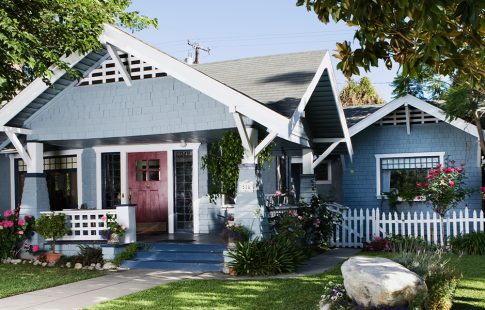When shopping for a mortgage, borrowers are usually faced with two primary options: a fixed rate mortgage and an adjustable rate mortgage (ARM). But what is the difference between a fixed rate and adjustable rate mortgage?
Simply put, a fixed rate mortgage locks in a consistent interest rate for the life of the loan, while the interest rate with an adjustable rate mortgage will change after an initial fixed-rate period. This means that if interest rates go up, the rate on an ARM will go up — and theoretically that if interest rates drop, those with an ARM can take advantage of lower rates at the time of adjustment. (There are also limits, or “caps” and “floors,” on how much the interest rate can fluctuate — more on that below.)
When would an ARM make sense for a borrower?
The interest rate on an ARM will change, so it could be a good choice for borrowers who are looking to move or refinance in a shorter amount of time. The following questions may guide your decision of whether or not an ARM is right for you:
- How long do you plan on living in your current home?
- What is the current interest rate market like?
- Could you still comfortably afford your mortgage payment if interest rates rise?
- How frequently does your ARM adjust? (See below for types of ARMs.)
Types of ARM loans
Unlike with fixed rate mortgages, which are virtually the same from lender to lender, adjustable rate mortgages offer more flexibility. This can be good news to borrowers who have done their research, but can also get a little overwhelming for anyone else. Let’s look at some of the most popular types of ARMs, as well as interest caps.
- 3/1 ARM: Most ARMs are set up so that there is a period of no interest rate changes, followed by adjustment periods. 3/1 ARMs mean that for three years, your interest rate won’t change. On the fourth year, your interest rate can change every year based upon the margin and index. There is also a 3/3 ARM, meaning that for three years your interest rate stays the same, and then on the fourth year your interest rate can change every three years.
- 5/1 ARM: Like the above, a 5/1 ARM means that for five years, your interest rate remains the same, and on the sixth year your interest rate can change every year.
- 7/1 ARM: Finally, a 7/1 ARM means that for seven years, your interest rate won’t change. On the eighth year, it can change every year.
Interest Rate Caps
Interest rate caps limit the interest rate on an ARM, and can be an initial interest rate cap, a periodic interest rate cap, or a lifetime interest rate cap.
- Initial interest rate caps limit how much the interest rate can increase for the loan’s first adjustment.
- Period interest rate caps limit how much the interest rate can increase at each subsequent adjustment date.
- Lifetime interest rate caps limit how much the interest rate can increase over the life of the loan.
Just as the above ARM types are written in a type of code, so are interest rate caps. Generally, the first number is the initial cap, the second is the period cap, and the third is the lifetime cap. For example, if an ARM is set up as a 5-2-5 structure, that means that the first adjustment can’t go above or below 5 percent, the subsequent adjustments can’t increase or decrease more than 2 percent, and the lifetime cap is 5 percent up or down.
If all of these numbers have your head spinning, don’t worry. The mortgage professionals at Mr. Cooper can walk you through all of your loan options, including adjustable rate mortgages, fixed rate mortgages, and many more. Click here to get started.






